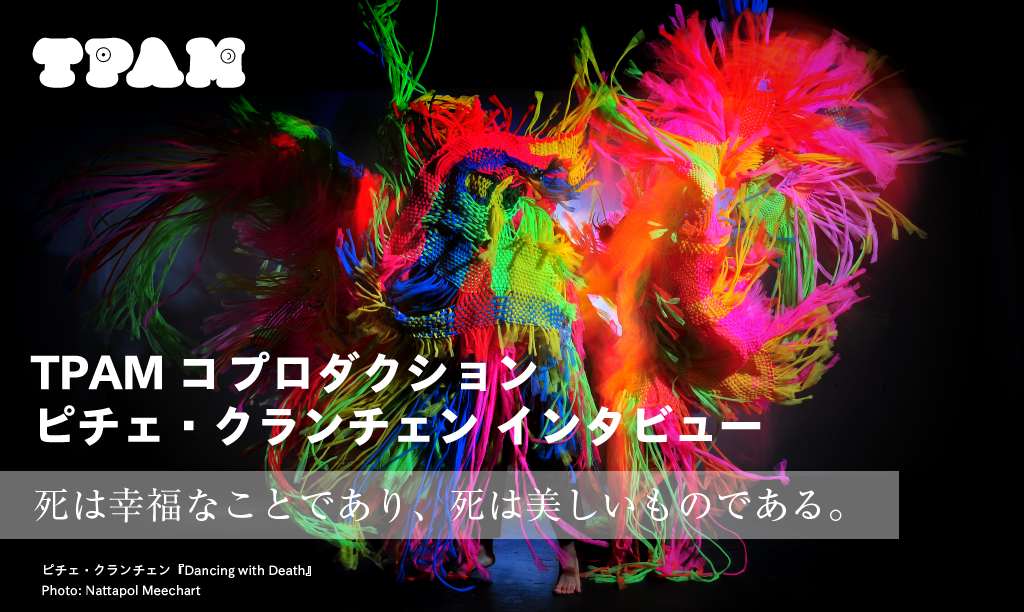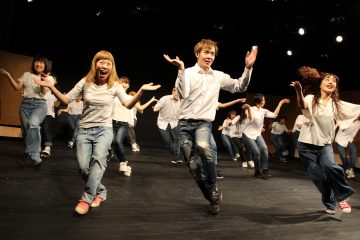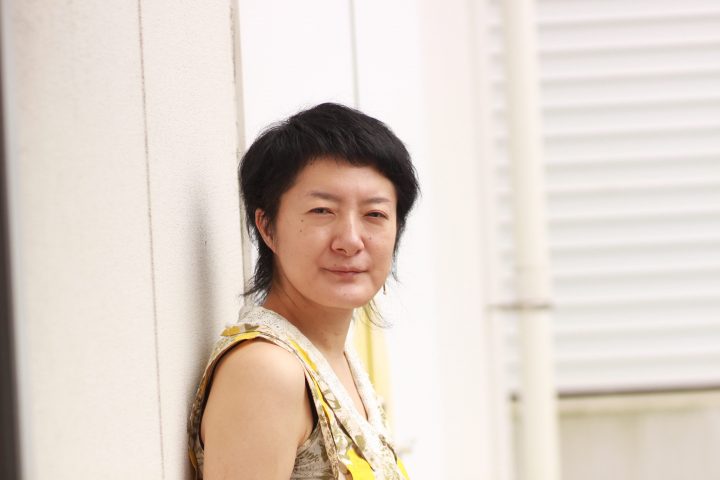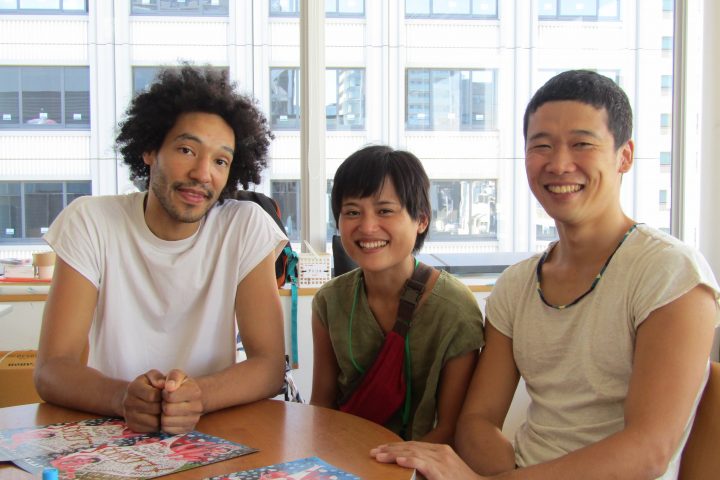TPAM Co-production: Interview with Pichet Klunchun | Death is a happy thing, death is a beautiful thing.

Interview & Text: Fumi Yokohori Photo (portrait): Masamasa Nishino
Released on February 6, 2016
The Petercorn Festival and Pichet's view on life and death are linked
P: Pichet F: Fumi Yokobori (Interviewer)
F: I read on the TPAM website that the Petercorn Festival was the inspiration for your new work, Dancing with Death. What was it about the Petercorn Festival that impressed you?
P: When I first saw the Peeta Khon Festival, I was interested in the way the local people created the festival themselves. They were creating art by fusing local culture with Buddhism and superstition. In Thai, spirits are called "Pee," and that image emerged. The local people believe that ghosts and spirits have no beginning or end, and are constantly changing. They also believe that spirits represent human feelings. The materials used for the costumes and masks for the festival are familiar. For example, the masks are made from coconut leaves and shells, and steamers for glutinous rice. The costumes also incorporate discarded clothes and yellow monks' robes. When the local people decided on their costumes and masks, they made use of their own superstitions and the knowledge they had. In addition, the way the festival was created, the two times of "death" and "reality" were expressed three-dimensionally and coexisted in the same place. In other words, the structure was such that spirits and humans stood in the same place. Usually, when people involved in the arts create a stage, they often create a structure between "audience" and "self," "here" and "present," but I found it interesting that local people who have never studied art created a similar structure and created their own art. I learned a lot through this festival, but the thing that impressed me the most was that death is a happy thing, that death is a beautiful thing. This was the content that first gave me the idea.

F: Could you tell us more about what you said at the end, "Death is a happy thing, death is beautiful"? I think that "death" is directly or indirectly involved in all of Pichet's works so far. I have the impression that Pichet's view of life and death is more clearly expressed in this new work. Is that right?
P: Yes. Most of my works express things related to "death". I think that human beings are beings who want to be superior to everything else, to win. For example, we can make it rain against nature. We can store water in dams and control the amount of water. We can go outside the earth, even into space. However, if there is one thing that humans cannot win against, it is "death", and we cannot control death. I don't think there is any perfect nature left these days, but I think death is the only perfect nature, and I think it is "rebirth". So I think death is beautiful. Also, in stage performances, death is the only thing that can never be created. For example, on stage, we can eat and lie down, but we cannot express death. I think it is good to express death in various ways on stage. At the Petercorn Festival, the local people divide a human being into three parts, the body, the spirit, and the mind, when a person dies. Based on that idea, I expressed "death" at the festival. Normally, death is something that humans are afraid of. However, I believe the festival conveys the message that death is something close to us and that it is not something to be afraid of.
F: When you said "rebirth" earlier, does that mean that one person's death is replaced by a new life?
P: Although "rebirth" is a fundamental idea in Buddhism, I don't particularly explain it in the work. For example, nature is also "reborn" as spring comes, summer comes, autumn comes, winter comes, and spring comes again. I think everything is "reborn". I don't intend to summarize it as being born, dying, and being reborn again. There are many different ways of thinking about it. However, the idea of "rebirth" has had a great influence on this work. It appears in the choreography of the dance and in the design of the stage set. It also appears in the structure of the work, which is to return to the "beginning". However, even if you return to the same place, it is completely different from before. We celebrate our birthdays on the same day every year, but it is not the same time, and we are not the same person.
Shifting the techniques used in the "Petercorn Festival" to his own works
F: Are there any specific techniques used in the "Petercorn Festival" that you have incorporated into this work?
P: First of all, before making "Dancing with Death," I started with research. I just compiled the results of that research into a book three months ago. When I was doing the research, I collected various data, and interviewed local people on site. For example, people who make masks, mediums who perform rituals, etc. All the resources I collected were used in "Dancing with Death." One concrete example of how I used the festival's expression techniques in my work was to bring together different natural elements one by one. Then, I treated them as one spirit. I incorporated these methods in "Dancing with Death."
F: In "Dancing with Death," did you incorporate elements that don't seem to coexist together, not only in the visual aspects like the costumes, but also in the choreography?
P: Yes, I also used it in the choreography. Another thing I incorporated was the local "humanity." It separates "body" from "emotion." When the audience watches this piece, they will be using their "body," "emotions," and "thoughts." Another characteristic that is clearly evident in the choreography is the repetition. The same thing is repeated once, twice, three times, but each time something new is born. The local people's dance develops rapidly through improvisation, and the way they develop is a way of making the most of their own individuality and the situation. I used that in the choreography.
F: So the choreography for this piece is not completely decided, and there is the possibility of it changing in various ways depending on the dancers' decisions?
P: It's in between.
A first attempt at co-production between Asia
F: Now, changing the subject, this work is a co-production between Asia. It is a co-production with Esplanade in Singapore and TPAM. I also heard that there are plans to tour it to Australia. I think there are still few examples of co-productions between Asia. Pichet, you have experience in many co-productions in your work in Europe, but what do you think about this co-production between Asia?
P: This is my first co-production with Asia. I don't think it's that different from other co-productions I've done. However, there is one thing that makes me feel that this is different. When Asians sit at the same table and make plans, I feel that we are discussing things with the same culture and the same ideas that we all have. That's a very new feeling, and I think it's a very good thing. Also, I think it's good that Asian artists can receive support in their work.

Predicting the future of dance
F: Finally, a question about something personal. Last year, I gave birth to a child. I have started to think more about what society should be like 10 or 20 years from now. What kind of society do you think it would be like in 10 or 20 years from now? And what role do you think dance should play in that society?
P: Speaking from an Asian perspective about the future 10 or 20 years from now, dancers and choreographers will be creating works with various ideas. However, I think there will be fewer people who train their bodies and minds. And everything will be mixed together, traditional and modern. Also, I think that artworks will not be masterpieces. They will disappear for a moment. I expect that this will happen in the future. So, if you ask me, "What should I do?", I can say one thing right now: the younger generation does not train their bodies and minds, so if you are willing to train and make an effort to connect your body and mind, you will have a very high chance of success in the future. If you have limited space and time, go out into the wide world with what you can create in a small space and computers. The quantity may increase, but the quality will decrease, and when you post something on Facebook, you will get 100,000 to 1 million likes within 1 to 30 seconds. I think that such a phenomenon will occur in the future.
F: Will Pichet still be creating works in 10 years' time?
P: Yes, I still make them and I still dance. I will dance until I die.
F: I want to keep watching as long as I live.
P: There is still a long way to go. Maybe even until my grandchildren's generation. I'll practice more.
F: Thank you. Our time is up.
P: I am very excited to present this piece at TPAM. We are currently putting the finishing touches on it and making it very intense. See you soon.
F: Thank you very much. I'm looking forward to it.



